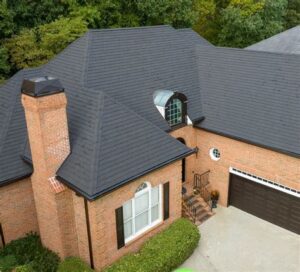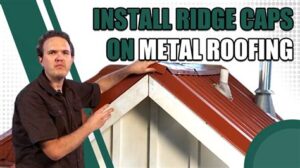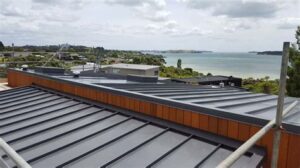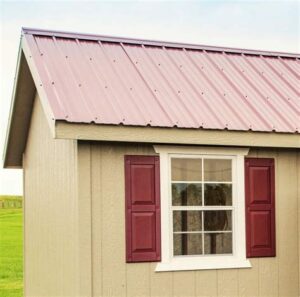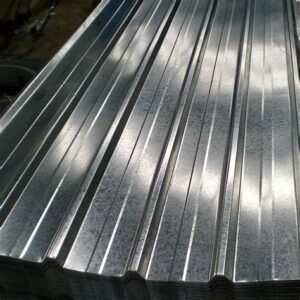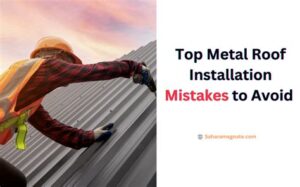When it comes to choosing the right roofing material for your home, two popular options often come to mind: metal and shingle roofs. Each has its unique set of advantages and disadvantages that can significantly impact your decision. In this article, we will delve into the pros and cons of both metal and shingle roofing systems, helping you navigate the crucial factors to consider. From durability and cost-effectiveness to aesthetic appeal and environmental impact, we’ll provide insights that will empower you to make an informed choice. Whether you’re embarking on a new build or planning a roof replacement, understanding the intricacies of metal and shingle roofs will guide you to the best solution for your specific needs and preferences. Join us as we explore this essential aspect of homeownership.
The Pros Of Metal Roofs: Durability And Longevity
One of the most significant advantages of metal roofs is their exceptional durability. Constructed from materials like steel, aluminum, or copper, metal roofs can withstand extreme weather conditions, including high winds, heavy snowfall, and hail, making them a robust choice for homeowners.
In terms of longevity, metal roofs can last anywhere from 40 to 70 years, far exceeding the typical lifespan of traditional shingle roofs, which generally last 15 to 30 years. This long lifespan translates into less frequent replacements, providing homeowners with peace of mind and stability.
Additionally, metal roofs are resistant to rust, corrosion, and pest damage, which contributes to their overall durability. Many metal roofing systems come with warranties that reflect their long-lasting nature, often ranging from 25 to 50 years.
In essence, when considering the pros of metal roofs, their unmatched durability and extended longevity are crucial factors that can greatly benefit homeowners looking for a reliable roofing solution.
Cost-Effectiveness: Comparing Long-Term Savings Of Metal And Shingle Roofs
When considering roofing options, one of the critical factors to evaluate is cost-effectiveness. Both metal and shingle roofs have their unique financial implications over time. Here’s a detailed comparison of their long-term savings, helping you to decide which roof may offer a better investment in the long run.
| Cost Factor | Metal Roofs | Shingle Roofs |
|---|---|---|
| Initial Installation Cost | Higher | Lower |
| Life Expectancy | 40-70 years | 15-30 years |
| Maintenance Costs | Low | Moderate to High |
| Energy Efficiency Savings | Up to 25% on cooling costs | Minimal |
| Insurance Discounts | Possibly higher discounts | Lower discounts |
In the long-term, The Pros of metal roofs become more evident, especially considering their longevity and lower maintenance costs. Although the initial investment is higher, the overall savings on repairs, replacements, and energy costs often make them the more cost-effective choice. Shingle roofs may have a lower upfront cost, but their shorter lifespan and potentially higher maintenance expenses can lead to greater overall expenditure as time goes on.
Evaluating the total cost of ownership and the expected lifespan of a roof can significantly influence your decision. When assessing The Pros and cons of roofing materials, bear in mind that cost-effectiveness is not just about the initial investment but also about how much you’ll spend over the life of the roof.
Aesthetic Appeal: Choosing Between Metal And Shingle Roof Designs
When it comes to the aesthetic appeal of roofing materials, both metal and shingle roofs offer distinct advantages that can enhance the overall look of your home. Understanding the pros of each choice is crucial for making an informed decision.
The Pros of metal roofs include a modern, sleek appearance that can significantly elevate a home’s architectural style. Metal roofs come in a variety of colors and finishes, allowing homeowners to achieve a custom look that complements their personal taste and the surrounding environment. Additionally, metal roofs can mimic traditional roofing materials like slate or shingles, providing versatility in design without sacrificing durability.
On the other hand, shingle roofs are traditionally associated with classic residential homes. Asphalt shingles are available in numerous styles and colors, presenting a more timeless appeal that is often preferred in certain neighborhoods or historical areas. The textured look of shingles can provide warmth and charm, giving your home a welcoming appearance.
The choice between metal and shingle roofs will depend on your personal preferences, the architectural style of your home, and the surrounding environment. Consider how each option aligns with your vision when evaluating the pros and cons of each roofing style.
Environmental Impact: The Pros Of Sustainable Roofing Options
When considering the environmental impact of roofing materials, both metal and shingle roofs have their own advantages. However, The Pros of opting for sustainable roofing solutions are significant. Metal roofs, for instance, are often made from recycled materials and are fully recyclable at the end of their lifespan. This means that choosing metal not only reduces waste but also decreases the demand for new raw materials, contributing to a more sustainable building industry.
On the other hand, traditional asphalt shingles have a higher impact on the environment due to their petroleum-based production process and the fact that they typically end up in landfills after their use. While some shingles can be recycled, the percentage that actually gets recycled is relatively low.
Furthermore, metal roofs reflect sunlight rather than absorb it, which can lead to decreased cooling costs in warmer climates. This energy efficiency translates to lower carbon footprints for homeowners. In contrast, shingle roofs tend to absorb heat, potentially increasing the energy required for air conditioning during hot months.
Additionally, many metal roofing options come with sustainable certifications, ensuring they meet environmentally friendly standards. By choosing a metal roof, homeowners can invest in a material that aligns more closely with their sustainability goals.
The environmental impact of roofing choices can be significant, and when evaluating The Pros of metal versus shingle roofs, it becomes clear that metal roofs offer a more sustainable option with less waste, lower energy costs, and greater longevity. Choosing roofing materials that contribute positively to the environment can be an essential factor in your decision-making process.
Maintenance Requirements: Understanding Care Needs For Metal And Shingle Roofs
When it comes to roofing, understanding the maintenance requirements is essential for ensuring longevity and performance. Here’s a breakdown of what you can expect for both metal and shingle roofs.
The Pros of metal roofs include their low maintenance requirements. Typically, metal roofs can last 40-70 years and are resistant to issues like rot or insect damage. They usually only require occasional inspections to check for loose seams or hardware, especially after severe weather. Cleaning off debris and ensuring gutters are clear will often suffice to keep them in good condition.
On the other hand, shingle roofs, while aesthetically pleasing and versatile, necessitate more regular maintenance. Asphalt shingles can be prone to moss and algae growth, especially in humid climates. Regular inspections for dislodged or damaged shingles are necessary to prevent leaks, and it’s recommended to replace any broken shingles promptly. Additionally, a thorough cleaning once or twice a year can help extend their lifespan and maintain appearance.
If you seek a roofing option with minimal upkeep, metal roofs may offer a significant advantage. However, if you prefer the look of shingles, be prepared for a bit more effort in maintenance to ensure they perform optimally through the years.
Frequently Asked Questions
What are the main advantages of metal roofs?
Metal roofs are durable, long-lasting, and resistant to harsh weather conditions. They also offer energy efficiency and are often recyclable, making them an environmentally friendly choice.
What are the disadvantages of choosing a metal roof?
Metal roofs can be more expensive upfront compared to other roofing materials. They can also be noisy during rain or hail storms and may dent under impact from heavy objects.
What benefits do shingle roofs provide?
Shingle roofs are generally more affordable, easier to install, and come in various styles and colors, providing aesthetic flexibility. They are also quieter than metal roofs during rain.
What are the downsides of using shingle roofs?
Shingle roofs typically have a shorter lifespan than metal roofs, are more susceptible to weather damage, and may require more frequent maintenance and replacement.
How do metal roofs perform in extreme weather conditions?
Metal roofs are highly resistant to wind, snow, and ice. They are less likely to suffer from leaks or water damage compared to shingle roofs, making them ideal for extreme weather.
What factors should I consider when choosing between metal and shingle roofing?
Consider your budget, the architectural style of your home, local climate, and your long-term plans for the property. Additionally, think about maintenance requirements and how long you plan to stay in your home.
Is it possible to install a metal roof over an existing shingle roof?
Yes, many homeowners choose to install metal roofs over existing shingles, which can save on labor costs. However, it’s important to check local building codes and the condition of the existing roof.
